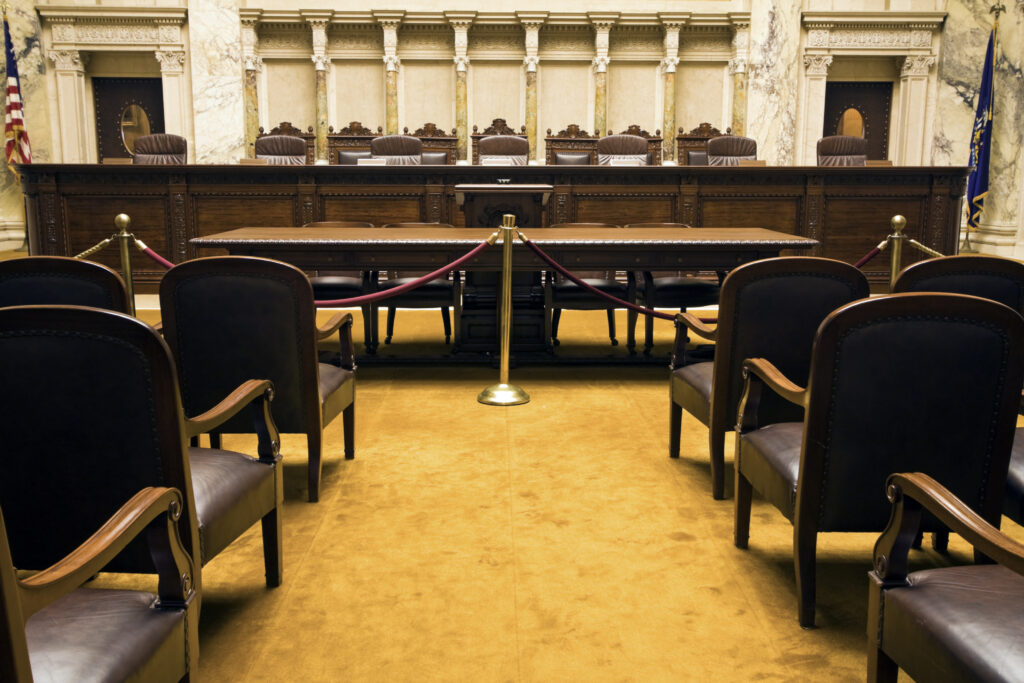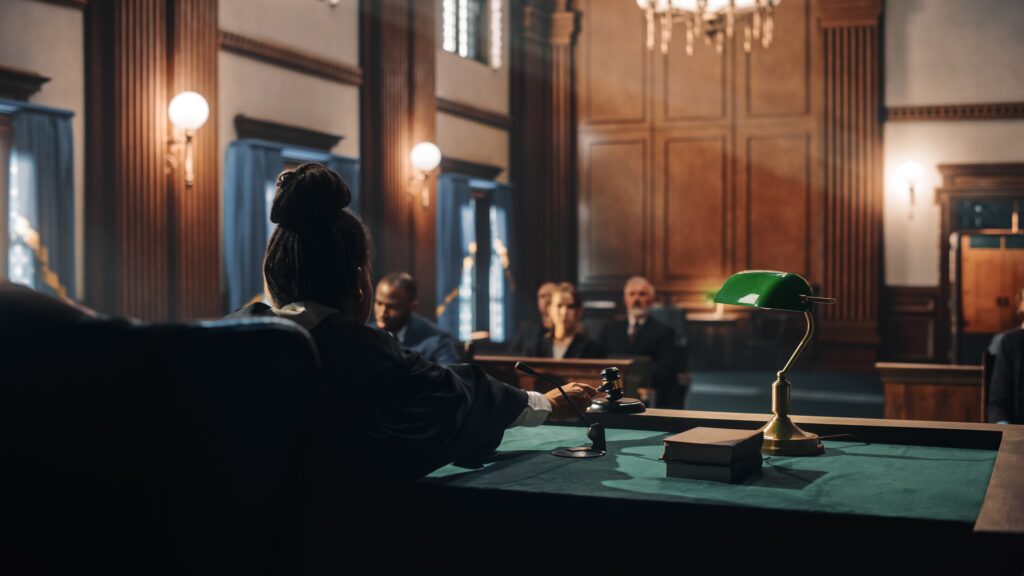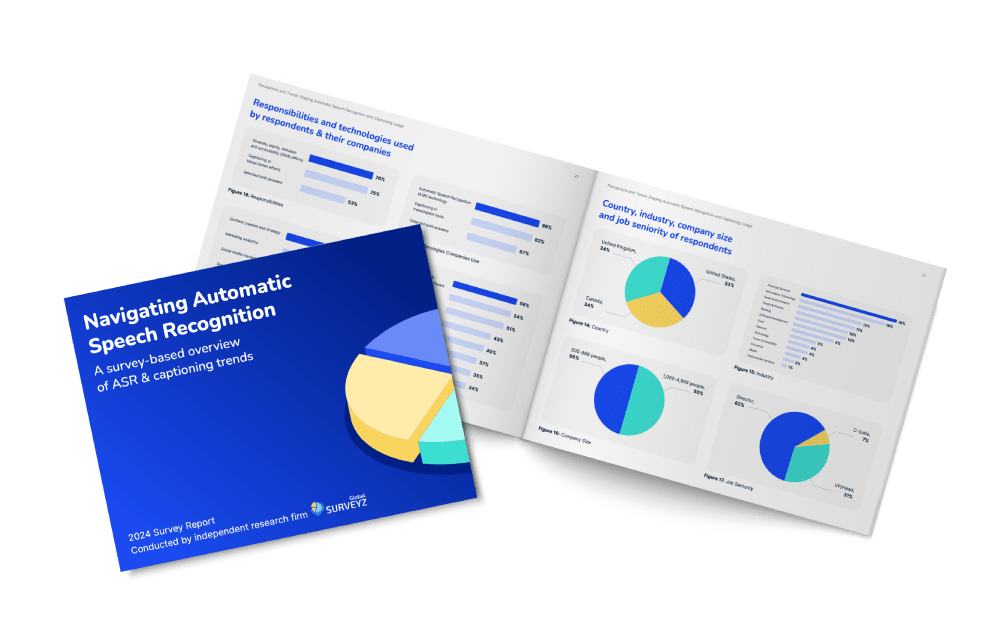It’s no secret that the legal industry is facing a dwindling number of trained stenographers. Last year, the former Director of State Courts, the Hon. Randy Koschnick, created a 30-person panel to address the need for more court reporters. That panel, comprised of court reporters, judges and district court officials, recently released a report detailing their plans. The strategy relies on technology as a way to boost the efficiency of the state’s resources so that courts have the record-keeping support that they need.
While the court system still relies on stenographers as a part of its record-keeping strategy, officials know that with more of those professionals retiring each year, and fewer students learning the trade, they need to be proactive about filling the gap. Digital court reporting is the likely answer to the issue, and the panel’s report offered a plan to deploy more technology in the state’s court system to accommodate this approach. However, with Koschnick losing his position following a surprise firing, the plan might not move forward as the panel intended. Here are some details about the shortage, the proposed solution, and the reasoning behind the push-back.

Why Technology is the Unavoidable Future for Court Reporting
Stenography is a difficult-to-learn skill that requires between two and four years of formal schooling. In fact, the training is so challenging that only around one in ten students graduate. As a result, the majority of those who start the program don’t come out with a useful skill and instead lose their investment of time and money.
Capturing speech in real-time using a stenography machine requires learning how to use different combinations of keystrokes while carefully listening to everything that transpires, sometimes for long stretches of time. Stenographers who master this are valuable to the court system because they provide accurate records of courtroom dialogue. In many cases, those records are mandatory if a party wants to appeal their case.
However, with the advent of digital technology, including some tools, like Verbit’s, which are designed specifically for legal transcription, students are shying away from the time, money and effort it takes to become an expert stenographer. In fact, Wisconsin once had two schools for stenographers, but now only one remains.
Becoming a digital court reporter is a far less demanding process with the possibility of completing a one-year, fully online program. Once a digital court reporter completes this training, they can work in the court system, earning a starting salary of $50,000 a year and increasing that number to $80,000 with a few years of experience and additional professional certifications. For many of those interested in becoming court reporters, this option seems less risky and more likely to prepare them for future jobs in the field.
Added Benefits of Digital Technology
Wisconsin’s committee didn’t just recommend the switch because it will help them boost numbers. They cited the following benefits that newer tools like digital audio recorders (DAR) could offer court reporters and other members of the legal industry.
More flexible work arrangements
With DAR, court reporters could work from any courthouse. The system would open the possibility of accepting jobs in dozens of courthouses while working out of the one closest to home. The state’s Consolidated Court Automation Program (CCAP), can provide reliable recording methods for courtroom proceedings. Koschnick explained that while a judge may communicate with a court reporter via a platform like Zoom, those tools aren’t dependable enough. However, with the CCAP, the court reporter can connect from a different county courthouse and capture high-quality, reliable audio.
Not only could this drastically reduce the commute time for court reporters, but the courts could more efficiently cover all hearings, trials and other proceedings by making any court reporter statewide able to tap into CCAP’s professional IT network. A court reporter could even cover one proceeding at the Kenosha County Courthouse followed by another at the Douglas County Courthouse 10 minutes later, despite those locations being more than 400 miles apart.
Easier on the wrists
Years of typing can cause damage to a stenographer’s hands and wrists. Specifically, conditions like carpal tunnel syndrome often impact these professionals. Those who use DAR are spared the same level of physical strain.
In fact, the recommendations include urging stenographers to learn to use DAR and opt for this method for certain types of hearings. For instance, small claims or eviction cases are unlikely to require transcripts. With DAR, stenographers could capture the recording, but avoid the wear and tear on their wrists by only completing a transcript if the case ends up requiring one.

Universal records saved for longer
The panel pointed out that stenographers’ notes and dictionaries differ. In some cases, idiosyncrasies have made it challenging for one stenographer to complete a transcript if the original person is no longer able to.
Additionally, stenographers must keep their records for 10 years. However, there are times when a decade simply isn’t long enough. For instance, some criminal statutes require stricter sentences for repeat offenders, even if those crimes are decades apart. If the transcript is missing, the prosecutor may not be able to use those prior convictions to prove their repeat offender case. With DAR recordings, which the state planned to preserve for 50 years, this outcome would be far less likely, especially because any court reporter can use the recording to create a transcript if a party needs one.
High-quality audio that catches everything
DAR equipment is incredibly sensitive. Koschnick indicated that in one recent case, it captured a witness’ derogatory and vulgar statements about an attorney while they were on the stand, even though they said it under their breath and no one in the courtroom heard them.
The equipment can also separate audio so that it’s easier to understand people even when they start to talk over one another. This issue often becomes problematic for record keeping.
Given the benefits of the technology, the panel was optimistic about the future of court reporting in the state.

The New Plans Face an Obstacle
Koschnick wanted to have DAR equipment in all of the state’s courtrooms by the end of the year. With those updates, the panel thought that Wisconsin could tackle the challenges related to the court reporter shortage. However, the Wisconsin Supreme Court terminated Koschnick from his position before the state could complete the plans.
The DAR system is part of the reason for the ouster, with some judges taking issue with the plans. The Milwaukee Trial Judge Association stated that the installation of the recording technology was “unsettling and unacceptable.” Concerns seem to stem from what critics view as “surreptitious listening and monitoring.”
Still, everyone in the state knows that they need to tackle the court reporter shortage. In fact, Milwaukee County courts shut down last year because they couldn’t find court reporters to cover hearings highlighting the seriousness of the issue.
Wisconsin is still working to navigate the conflict surrounding its solution, but other states, including Kentucky, Florida and Indiana, already rely on digital court reporting. Those states allow the use of audio and visual recordings to preserve official court records.
It’s also important to note that even in most states where digital court reporting is becoming standard, stenographers may cover more high-profile or high-stakes cases. According to one stenographer turned digital court reporter, it’s the smaller cases – like family law matters – that will be left without any record preservation if states fail to address the shortage. This outcome will create inequitable scenarios.
Additionally, the clear need for more court reporters means the shift to a technological approach will happen whether people resist or not. The smart move is to embrace the change and find ways to ensure that reporters, regardless of their equipment, are able to provide quality, accurate court records.
Turning to Specially Tailored Legal Transcription Solutions
Verbit works with court reporters and court reporting agencies to provide tools that support digital court reporters. For more information about how our legal ASR is helping the industry preserve records of depositions and other legal proceedings, reach out.




